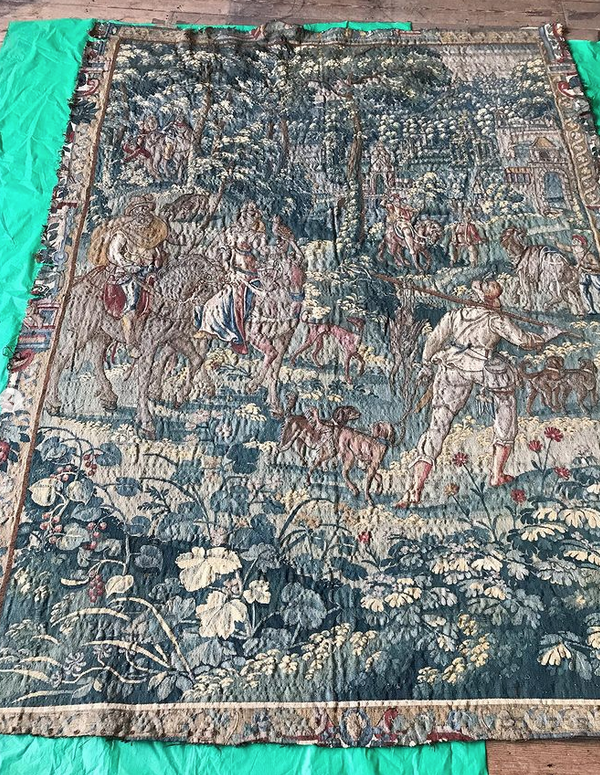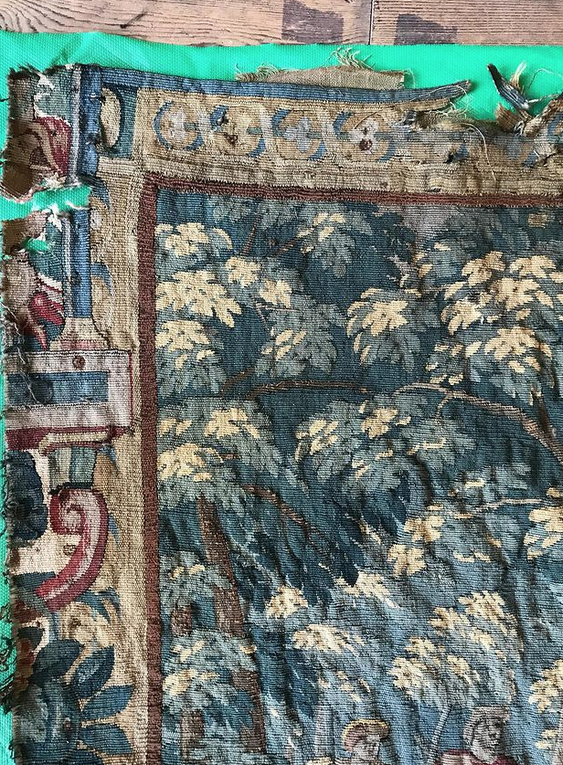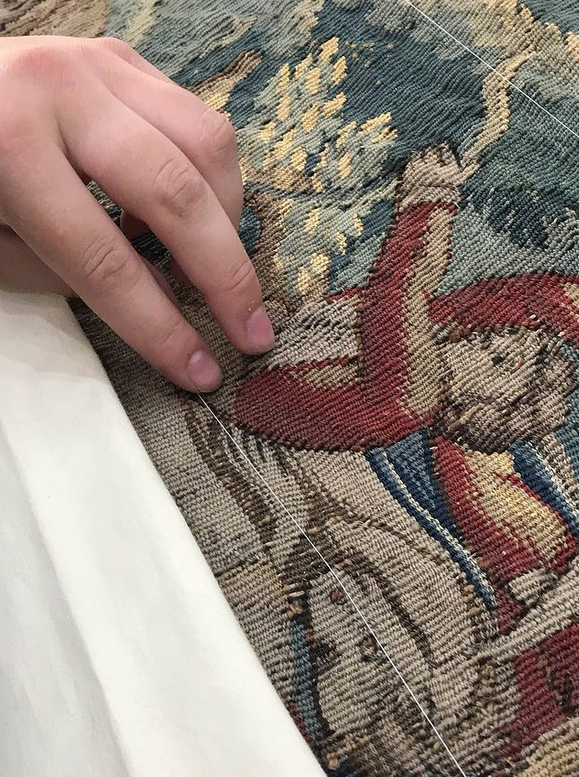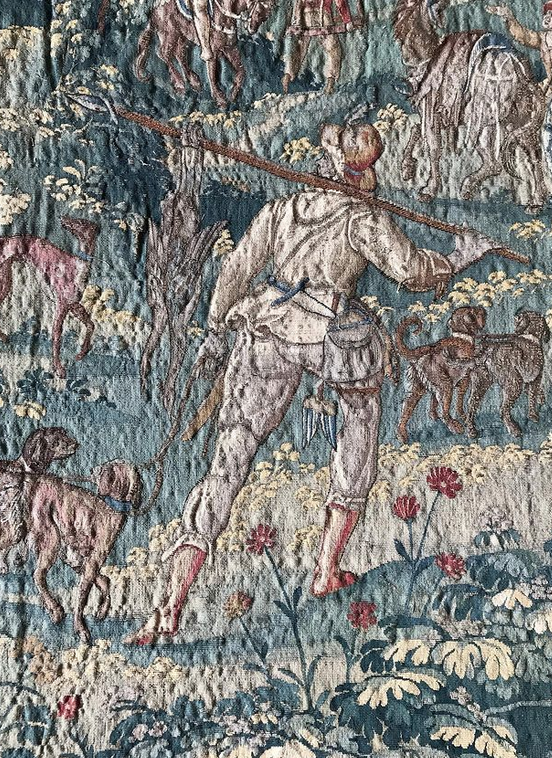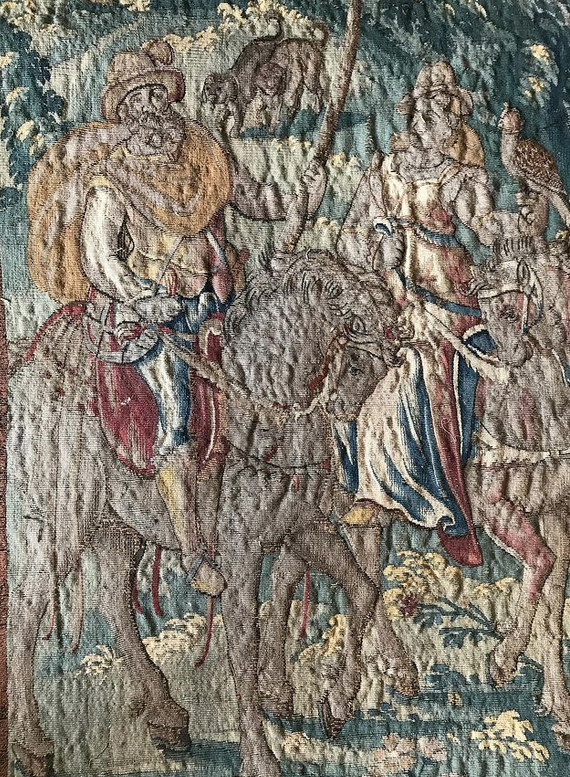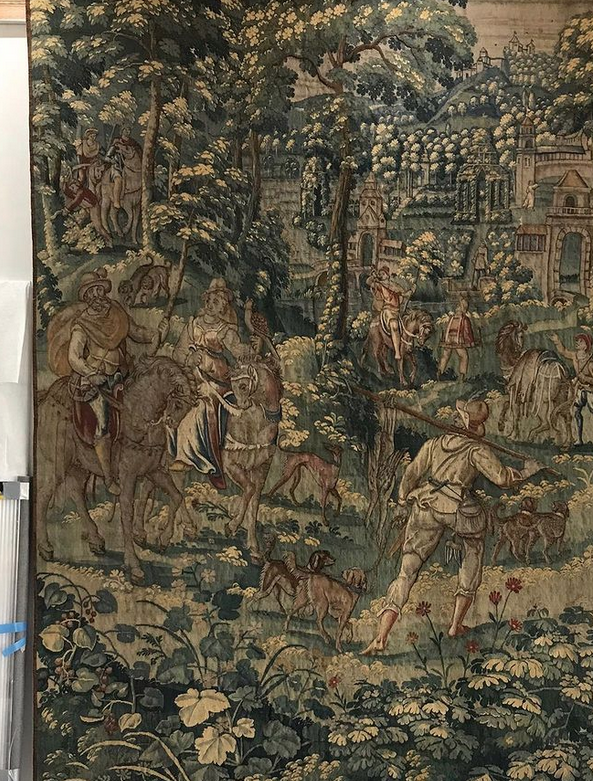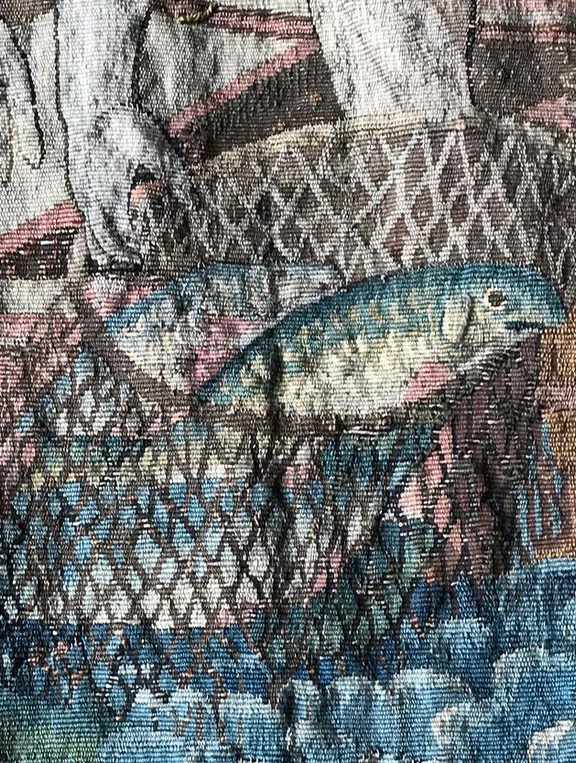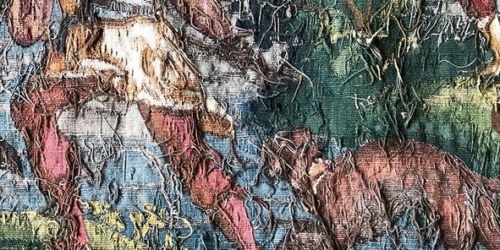
We’re currently working on three gorgeous 1580’s Brussels hunting tapestries for a private client. Our latest new team member, Rhianne Deaves, has been working with Hazel to clean and minimally repair broken slits and then folding the edges in to neaten them and reduce their size as the client remit was to make the tapestries fit specific walls. Of course we are not cutting them down as was often done in the past; rather we have folded the excess tapestry in, humidified and pressed to help the tapestry accept the new folds and then carefully sewn the layers together to create the new edges. On this the smallest of the three, we have been able to follow the line of a woven inner border – it won’t be so easy on the next two.
It’s a good solution for these tapestries now as it allows them to be used straight away without need for a large budget, not currently available. In the future hopefully more funds will allow them to be fully conserved by releasing our folded edges and giving each a fuller conservation support.
Rhianne seems to be a bit of a natural on tapestry which fantastic because there is such a lack speciaist tapestry conservators out there and very little opportunity to train. These petite sized tapestries are the perfect ‘first’ tapestry project for a trainee and already during her first three weeks with us Rhainne has covered many of the basic tapestry conservation techniques, learning from our most experienced tapestry conservator Hazel.
Also shown below are some back view shots of the tapestries. They must have been glorious when first woven with their rich jewel like colours! They’ve actually not faded too badly but it’s the colour balance that subtly changes.
These tapestries feel rather autumnal in their subject matter and colours; rather appropriate as we change seasons.


